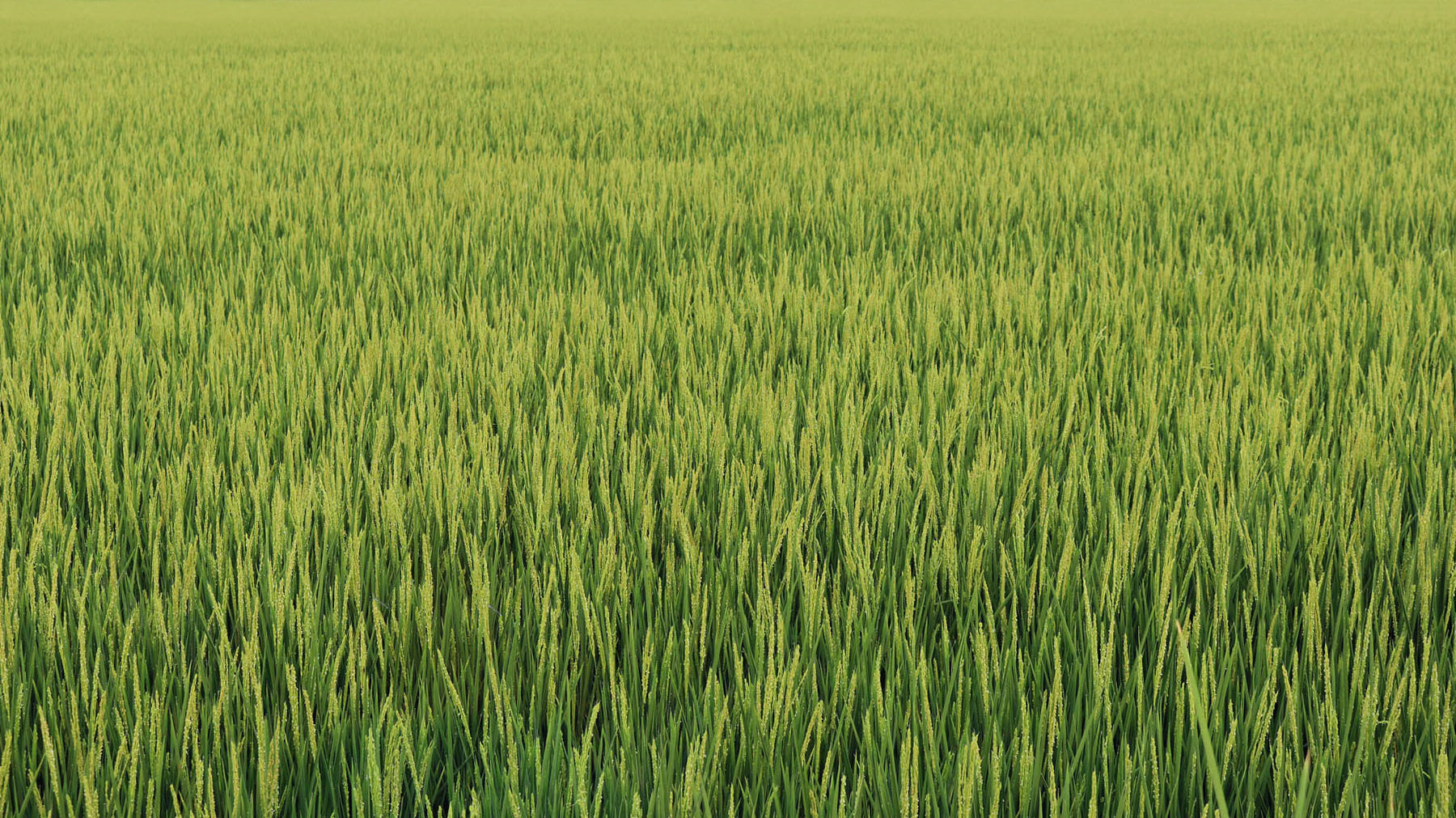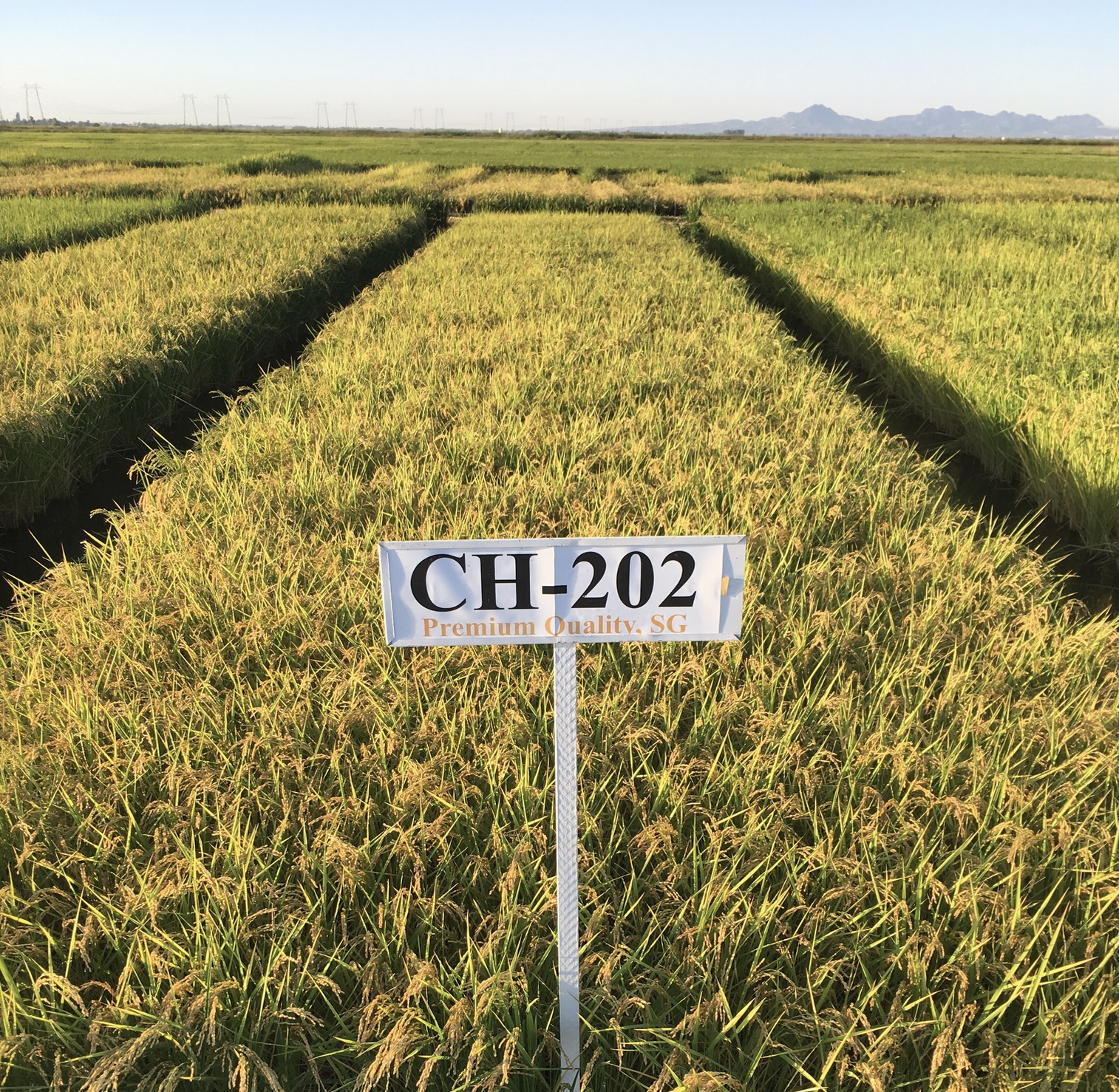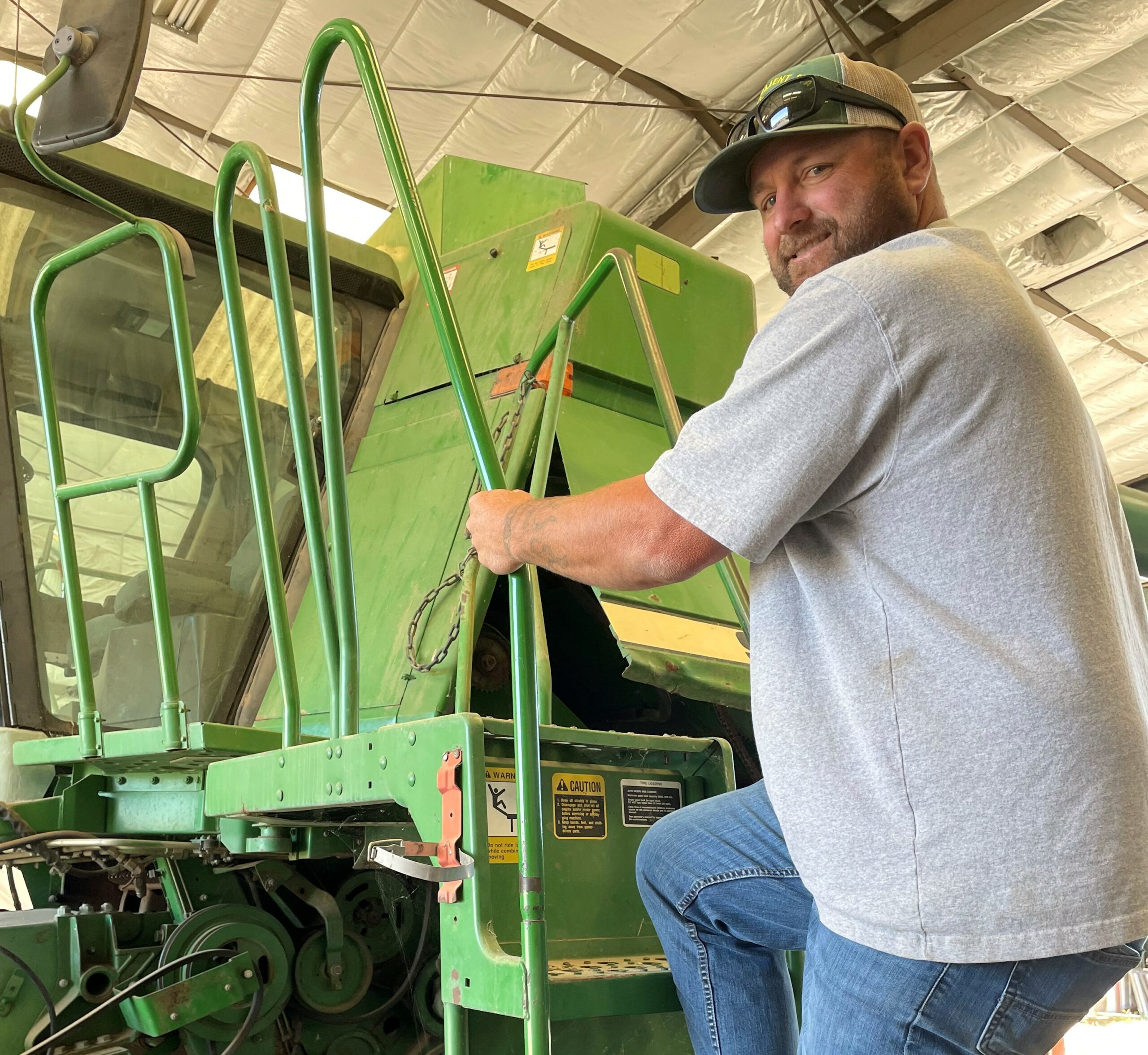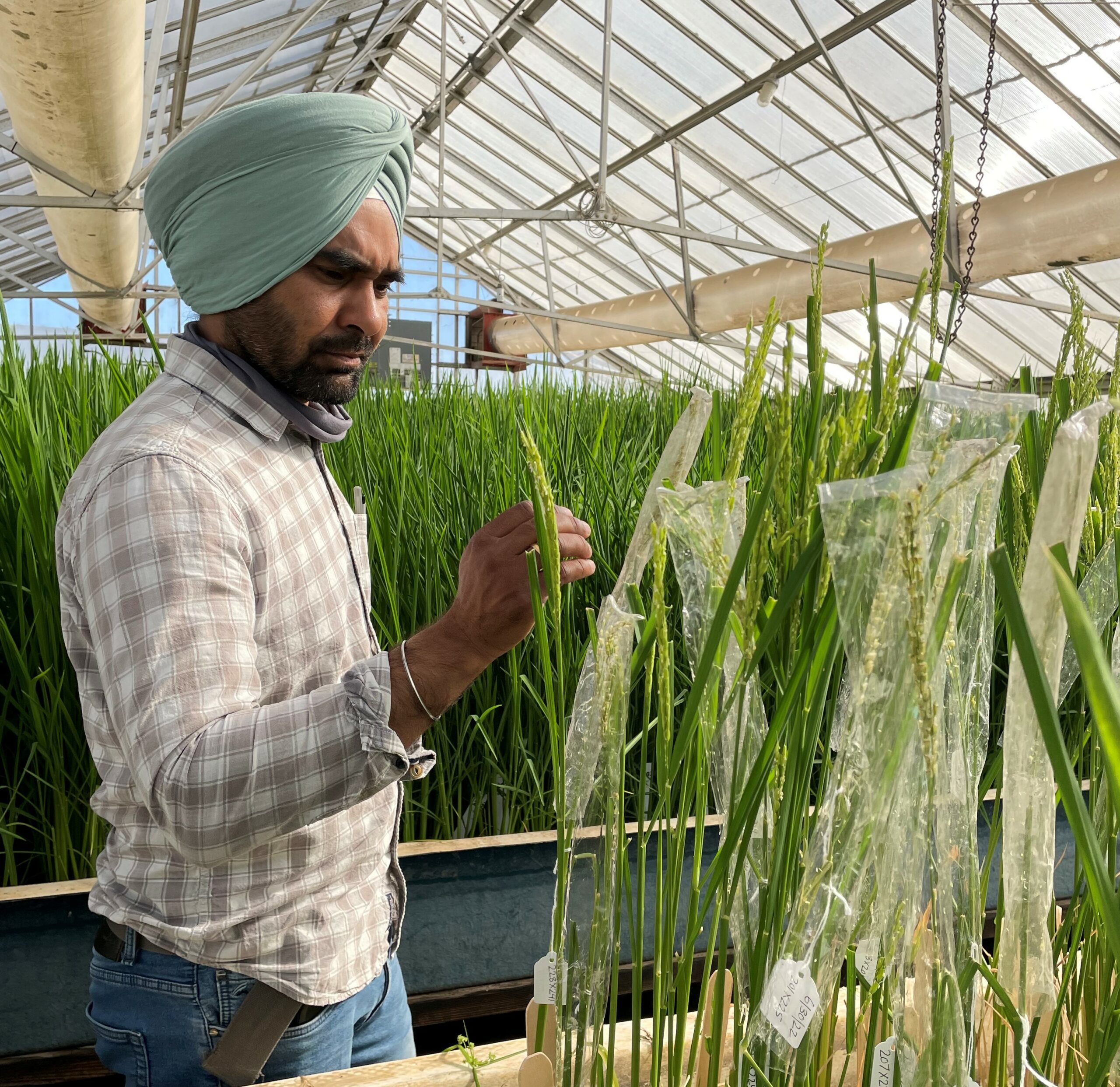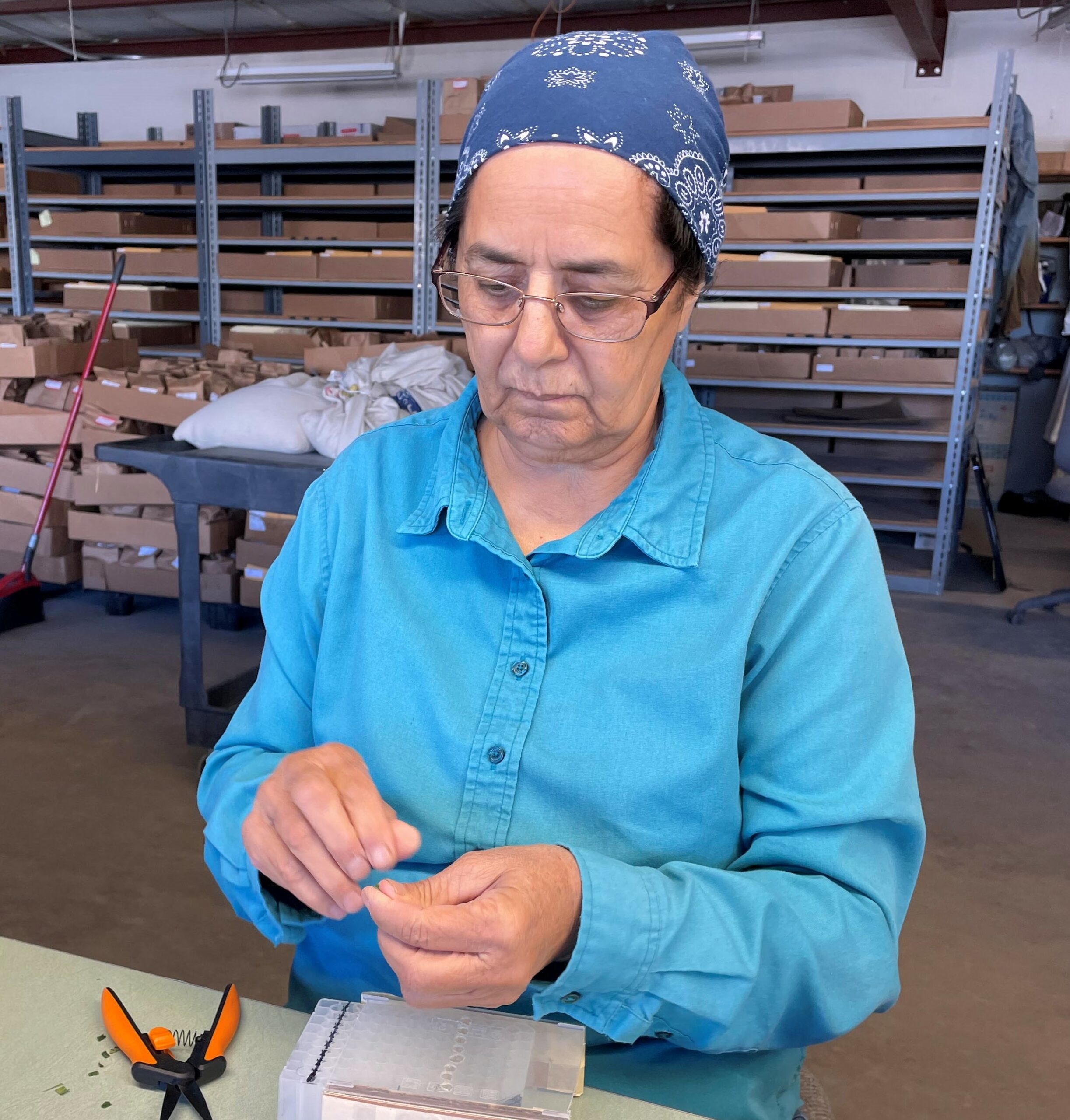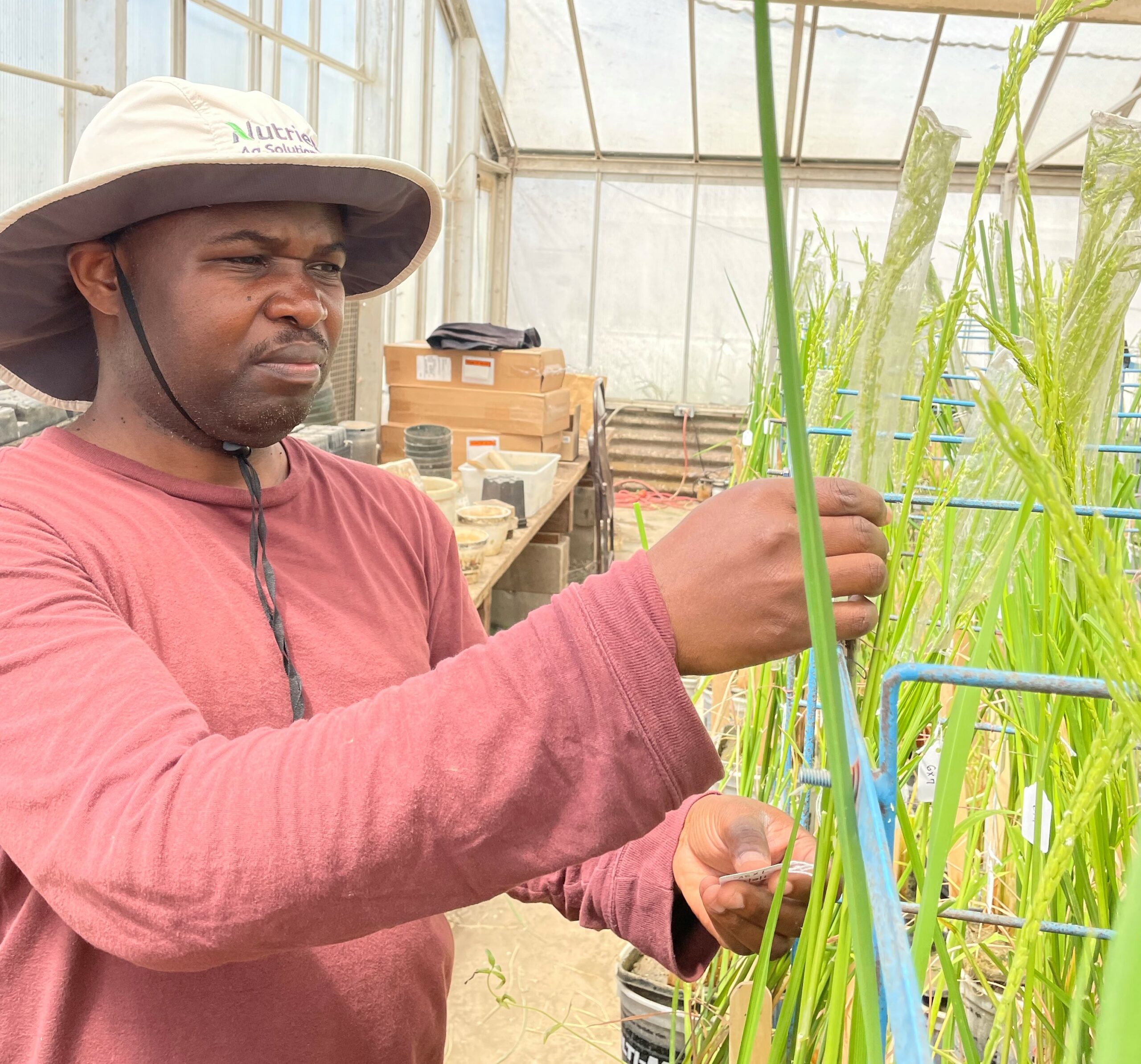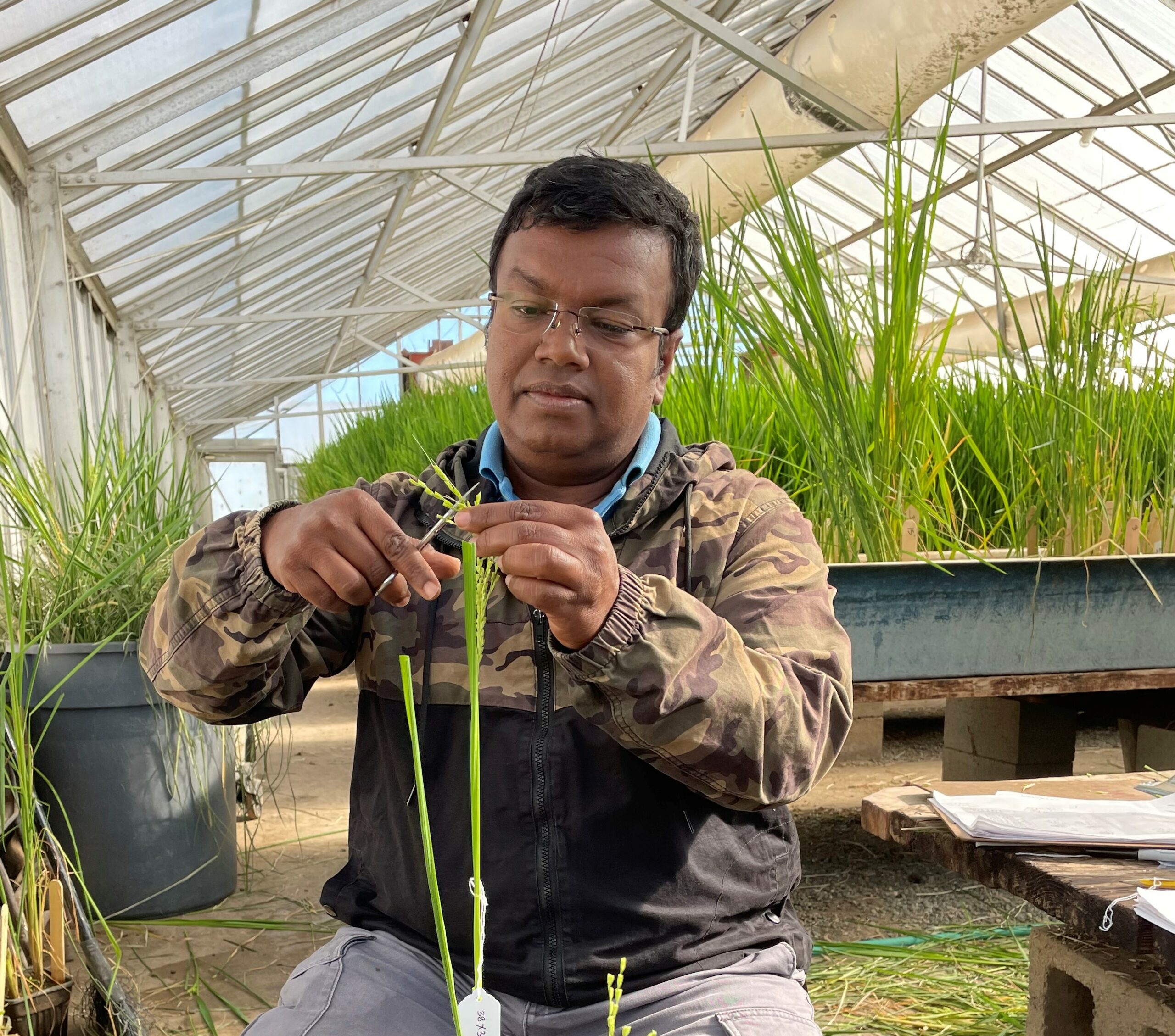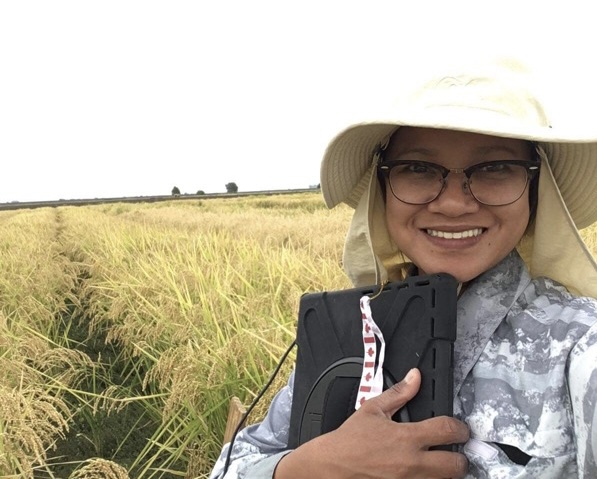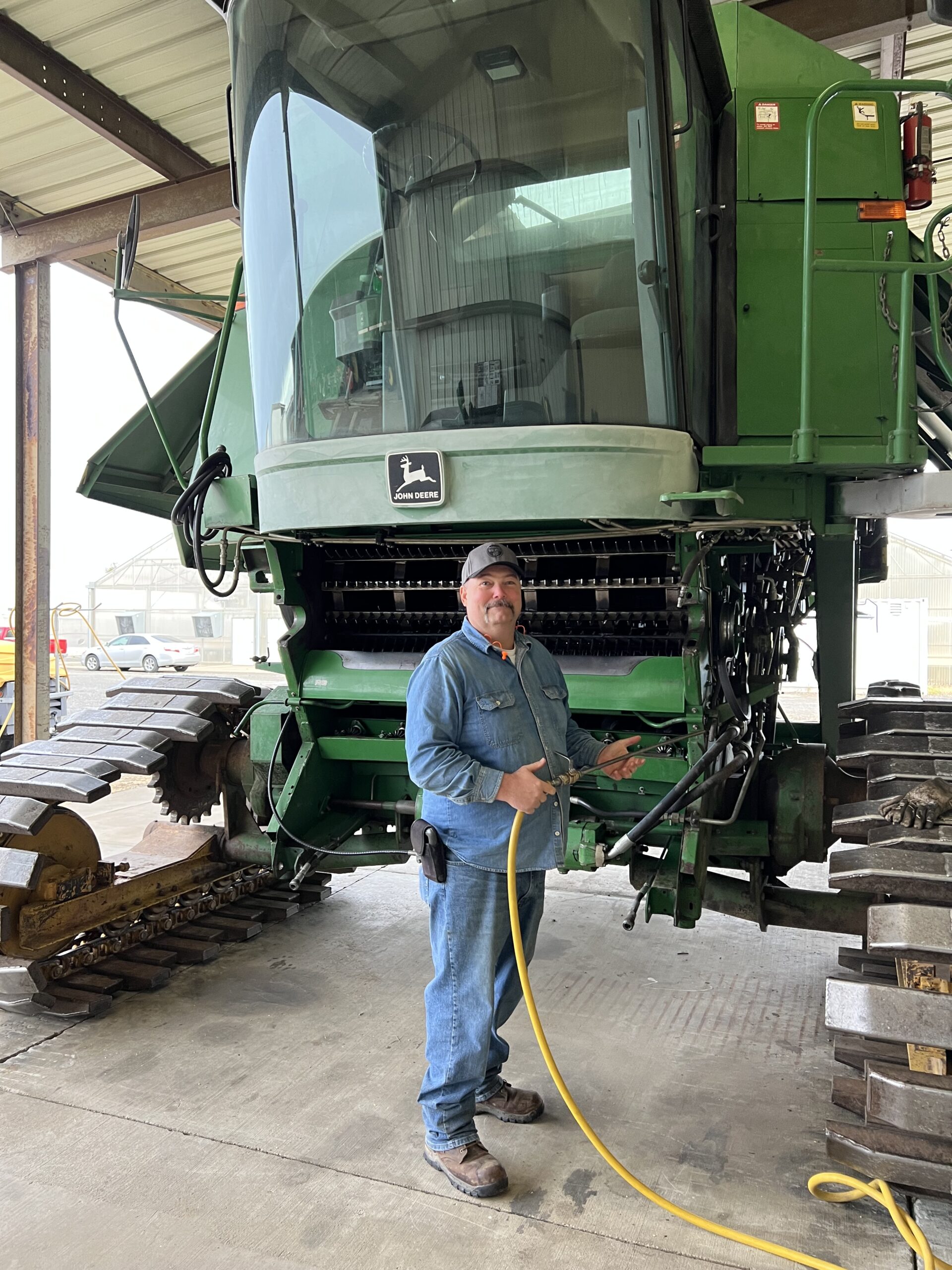Rice Variety Profile for Calhikari-202
RES Rice Varieties
Variety: Calhikari-202
- Former ID: 04Y177
- Year: 2012
Introduction
Calhikari-202 is an early maturing, semidwarf, rough hulled (pubescent), premium quality short-grain cultivar. It was developed by the California Cooperative Rice Research Foundation, Inc. (CCRRF) at the Rice Experiment Station (RES), Biggs, CA and released to growers in April 2012. Calhikari-202 is protected under the US Plant Protection Act, Title 5 (to only be sold as a class of certified seed) as well as an US Plant Utility Patent.
Pedigree and Breeding
Calhikari-202 is an early selection from a cross of a sister line of Calhikari-201 with Hitomebore and has the pedigree Koshihikari*2/S-101//Koshihikari/S-101/3/Hitomebore. Koshihikari is more than half-century old, tall, late maturing, lodging susceptible, pubescent Japanese premium short grain famous for its quality. Hitomebore is a short-statured, early maturing, pubescent, lodging susceptible, premium short grain also from Japan. S-101 is very early, pubescent semidwarf variety developed at the Rice Experiment Station and is no longer in production today. The experimental designation was 04Y177. Calhikari-202 was developed as an alternative to Calhikari-201 and for the premium short grain market in California.
Agronomic Characteristics
Calhikari-202 seedling vigor, based on seedling vigor scores is below Calhikari-201 and California medium grains. No marked difference in sensitivity to standard rice herbicides from the parent varieties has been observed, however commercial experience is limited. Calhikari-202 maturity as measured at days to 50% heading averages about 3 days earlier than Calhikari-201. Lodging is a highly variable trait to measure, but testing shows Calhikari-202 is more susceptible than Calhikari-201 and much more susceptible than M-206. UCCE 2008-11 plot yields averaged 8480, 8810, and 9580 lbs/acre for Calhikari-201, Calhikari-202, and M-206, respectively. In 2010-12, Calhikari-202 gave higher yields that Calhikari-201 in 20 of 31 tests and averaged 8620 and 8220 lbs/acre, respectively.
Calhikari-202 consistently gave lower stem rot scores than very susceptible Calhkari-201. Growers are still recommended to bleach treat seed for Bakanae. Calhikari-202 is susceptible to the race of blast disease found in California, however the field resistance of Calhikari-202 to blast is not known.
Milling and Quality
Calhikari-202 has given higher milling yields than Calhikari-201 in studies at RES. Optimum head rice yields were achieved at 21-22% harvest moisture and can decline rapidly below 18%. M-206 by contrast shows a lower optimum harvest moisture and more stable response. Japanese varieties are often harvested at higher moistures to minimize kernel fissures. Kernels of Calhikari-202 are smaller than Calhikari-201 and Koshihikari.
Physicochemical cooking quality tests values for % protein content, % apparent amylose and alkali spreading value are closer to Koshihikari than Calhikari-201 ranking by as follows:Koshihikari>Calhikari-202>Calhikari-201. In several years of testing at RES, Calhikari-202 topped Calhikari-201 in quality parameters. However, the level of cooking and eating quality is slightly below the level of Koshihikari quality.
Area of Adaptation
The performance data collected at RES and by UCCE indicates that because of its susceptibility to low temperature blanking Calhikari-202, like Calhikari-201, is not recommended for production in cold growing locations and late planting situations. Seed growers in 2012-13 reported that it performed well for a premium quality short grain variety.
